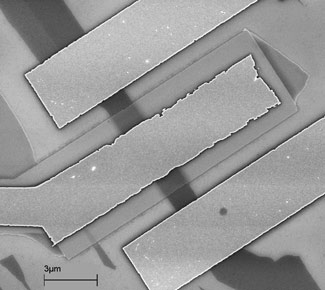Three University of California, Riverside researchers are part of team recently awarded a grant of almost $1.7m from the US National Science Foundation (NSF) to characterize, analyze and synthesize a new class of ultra-thin-film materials that could improve the performance of personal electronics, optoelectronic devices and energy conversion systems.
The team is led by Alexander Balandin, the University of California Presidential Chair in Electrical and Computer Engineering and founding chair of the materials science and engineering program at UC Riverside’s Bourns College of Engineering. Other members of the team are UC Riverside professor Roger Lake, UC Riverside research professor Alexander Khitun, and University of Georgia assistant professor Tina Salguero.
The project targets a new class of ‘van der Waals’ materials as well as heterostructures implemented with such materials. The ultra-thin materials may consist of just one atomic plane (making them two-dimensional). The project aims to investigate novel electrical, optical and thermal phenomena in such materials and heterostructures.
The research is expected to produce new material synthesis techniques and enable practical applications of ultra-thin-film materials in electronic switches, optical detectors, low-power information processing and direct energy conversion. The novel devices implemented with the ultra-thin films of van der Waals materials have potential for high speed and low energy dissipation, say the researchers.

Picture: Prototype device with a 2D channel that will be used by the researchers.
Interest in two-dimensional materials was stimulated by the success of the ultimate two-dimensional material, graphene — a single atomic plane of carbon atoms. Graphene research activities resulted in the observation of new physical phenomena and led to many proposals of practical applications, including improving the performance of everything from smart phone to batteries to tennis rackets.
Electrical and thermal conduction in graphene differs substantially from that in conventional bulk three-dimensional materials. Graphene’s unusually high thermal conductivity was discovered at UC Riverside by a group led by Balandin. The exceptional heat conduction property of this two-dimensional material is presently finding its way into practical applications in thermal management.
Each member of the NSF-funded team will cover different aspects of the research and application of the van der Walls materials. Balandin will conduct materials characterization, fabrication and experimental testing of nanodevices, Lake will perform first-principles theoretical analysis and computer simulation of the properties of new materials and devices. Khitun will design circuits and systems based on two-dimensional materials and atomic heterostructures. Salguero will synthesize new materials using chemical approaches.
The NSF funding to the UC Riverside team was awarded via the Emerging Frontiers in Research and Innovation (EFRI-2014) program Two-Dimensional Atomic-layer Research and Engineering (2-DARE).




